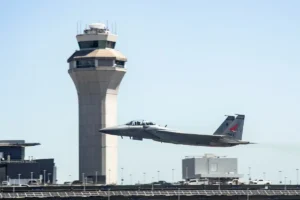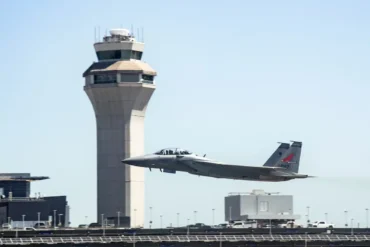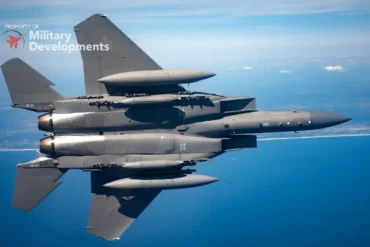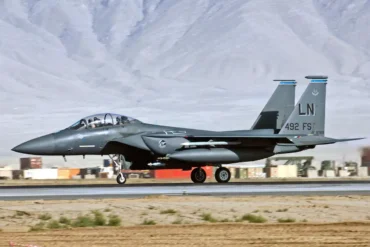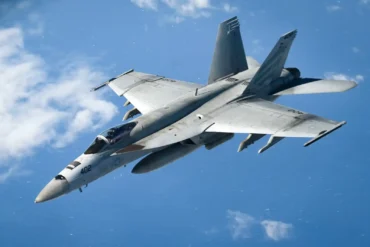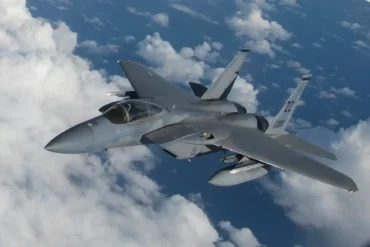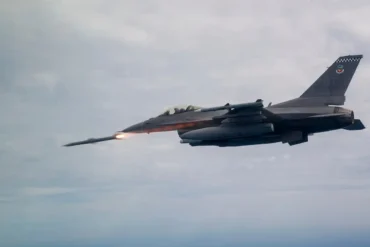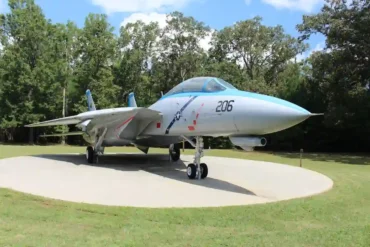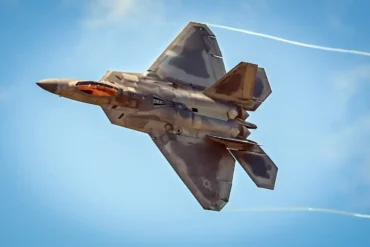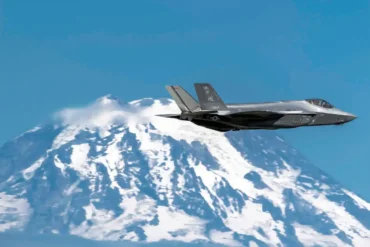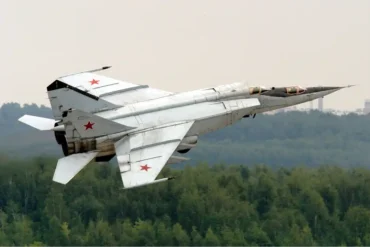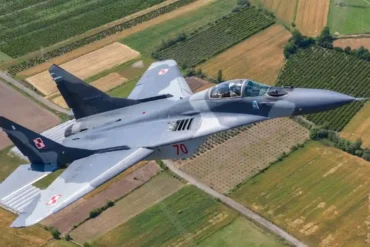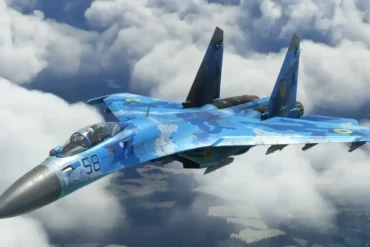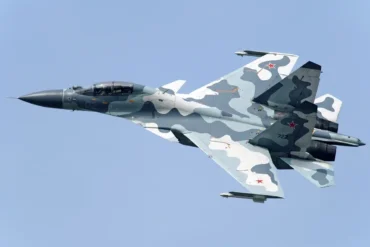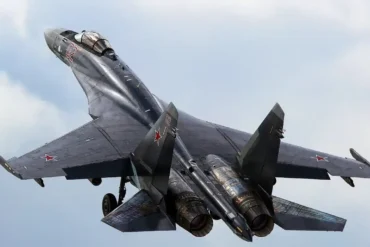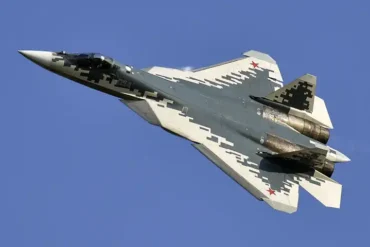The F-15EX Eagle II is one of the most formidable fighter jets in modern aviation, combining cutting-edge technology with the legendary capabilities of its predecessors. Designed to meet the high demands of contemporary aerial warfare, the F-15EX offers a range of enhancements, especially in its speed and combat performance. This article dives into the F-15EX Eagle II’s top speed, detailing its capabilities in multiple units including Mach, kilometers per hour (km/h), and miles per hour (mph). Additionally, we will explore the aircraft’s general characteristics, design, and performance attributes that make it a standout in the world of high-performance fighter jets.
Understanding the F-15EX Eagle II
Before delving into the specifics of the F-15EX Eagle II’s top speed, it’s important to understand its place in the evolution of the McDonnell Douglas F-15 Eagle family. The F-15EX Eagle II is the latest model in the F-15 series, featuring a host of upgrades designed to extend the aircraft’s operational capabilities. While it retains the core design elements that have made the F-15 one of the most successful fighter jets in history, the F-15EX boasts a host of enhancements, including digital fly-by-wire systems, advanced avionics, and a highly advanced weapons system.
F-15EX Eagle II Top Speed at a Glance
The F-15EX Eagle II’s maximum speed is one of its most impressive attributes. At high altitude, the F-15EX can reach speeds of Mach 2.5, which translates to:
- 1,650 miles per hour (mph)
- 2,655 kilometers per hour (km/h)
At low altitude, where the aircraft operates in different conditions, its maximum speed drops to Mach 1.2, which equals:
- 921 miles per hour (mph)
- 1,482 kilometers per hour (km/h)
This difference in top speed at different altitudes highlights the aircraft’s ability to maintain impressive performance across a wide range of flight conditions, making it versatile in combat scenarios.
The Importance of Top Speed in Modern Combat
In modern air combat, top speed is not only a matter of performance but also of survival. Aircraft like the F-15EX rely on their speed to outmaneuver adversaries, evade enemy radar, and perform interception missions. The F-15EX Eagle II’s ability to reach Mach 2.5 allows it to intercept fast-moving targets and engage in high-speed, high-altitude dogfights.
Moreover, the F-15EX’s impressive top speed is complemented by its climb rate, with the aircraft capable of reaching 50,000 feet per minute, a testament to its powerful General Electric F110-GE-129 engines that deliver over 29,500 lbf of thrust with afterburners engaged.
Design and Powerplant of the F-15EX Eagle II
The F-15EX features a sleek aerodynamic design that supports its remarkable speed and agility. With a length of 63 feet 9.6 inches (19.446 meters) and a wingspan of 42 feet 9.6 inches (13.045 meters), the F-15EX has an ideal structure for achieving high-speed maneuvers and sustained performance in various flight conditions.
Powerful Engines for Unmatched Speed
The heart of the F-15EX Eagle II is its engine. It is powered by two General Electric F110-GE-129 afterburning turbofan engines. These engines are capable of producing:
- 17,155 lbf of thrust each in dry mode
- 29,500 lbf of thrust each when afterburners are engaged
This remarkable thrust-to-weight ratio of 0.93 gives the F-15EX its exceptional speed and climb capabilities. With such an advanced propulsion system, the aircraft can perform high-speed dives, sharp turns, and quick vertical climbs, ensuring it remains a dominant force in both offensive and defensive maneuvers.
Airframe and Aerodynamics
The F-15EX’s airframe is designed for maximum aerodynamic efficiency, allowing it to reach its high top speeds without compromising on stability. The wing design, with its NACA 64A006.6 root airfoil and NACA 64A203 tip airfoil, contributes to the aircraft’s ability to achieve high speeds at various altitudes while maintaining control.
Range and Endurance
While top speed is a critical aspect of the F-15EX’s capabilities, its operational range and endurance also play significant roles in its combat effectiveness. The F-15EX Eagle II boasts an impressive:
- Combat range of 687 nautical miles (791 miles or 1,272 kilometers)
- Ferry range of 2,100 nautical miles (2,400 miles or 3,900 kilometers) with external fuel tanks
These range figures ensure that the F-15EX can operate effectively over long distances, whether conducting air superiority missions, precision strikes, or interceptions.
F-15EX: The Evolution of Fighter Aircraft Technology
The F-15EX Eagle II is not just about speed—it’s about total performance. This fighter jet integrates the latest aerospace technology to ensure superior operational flexibility. The advanced avionics package of the F-15EX enables it to detect and engage threats at far greater ranges compared to earlier models. Coupled with its comprehensive weapons systems, including advanced radar-guided and infrared-guided missiles, the F-15EX is capable of engaging both air and ground targets with precision.
Versatility in Combat
Despite its primary role as an air superiority fighter, the F-15EX Eagle II has been equipped to perform a wide array of missions. Whether performing close air support (CAS), precision strikes, or airborne surveillance, the aircraft’s impressive speed and range make it adaptable to changing mission requirements. The integration of multi-role capabilities ensures that the F-15EX remains relevant across different combat scenarios.
F-15EX Eagle II: Speed and Tactical Advantage
The F-15EX’s top speed is not just a measure of raw power but a strategic asset. With the ability to reach Mach 2.5 at high altitudes, the F-15EX can outpace many modern interceptors and surpass enemy aircraft in terms of sheer velocity. This advantage allows the F-15EX to strike first, engage targets at extended ranges, and quickly disengage if needed. The combination of its top speed, agility, and high altitude ceiling of 60,000 feet provides a significant tactical edge in both air-to-air and air-to-ground operations.
Adaptation to Modern Warfare
The speed capabilities of the F-15EX also make it a key asset in networked warfare environments. The aircraft can quickly reach combat zones, outpace adversaries, and operate alongside advanced command-and-control systems. This adaptability ensures that the F-15EX will remain an integral part of modern air forces, capable of addressing both traditional and evolving threats.
Conclusion
The F-15EX Eagle II is not just another fighter jet—it is the pinnacle of modern fighter aircraft engineering. With a maximum speed of Mach 2.5 (1,650 mph or 2,655 km/h) at high altitude and Mach 1.2 (921 mph or 1,482 km/h) at low altitude, the F-15EX delivers incredible performance across a wide range of mission profiles. Its powerful engines, advanced avionics, and versatile design make it one of the most formidable aircraft in the skies today.
From its top speed to its combat range and multi-role capabilities, the F-15EX Eagle II represents the future of air superiority, offering unmatched performance, agility, and survivability in the most demanding of environments. As air forces continue to adopt and deploy this next-generation fighter, the F-15EX will undoubtedly remain a dominant force in aerial combat for years to come.
